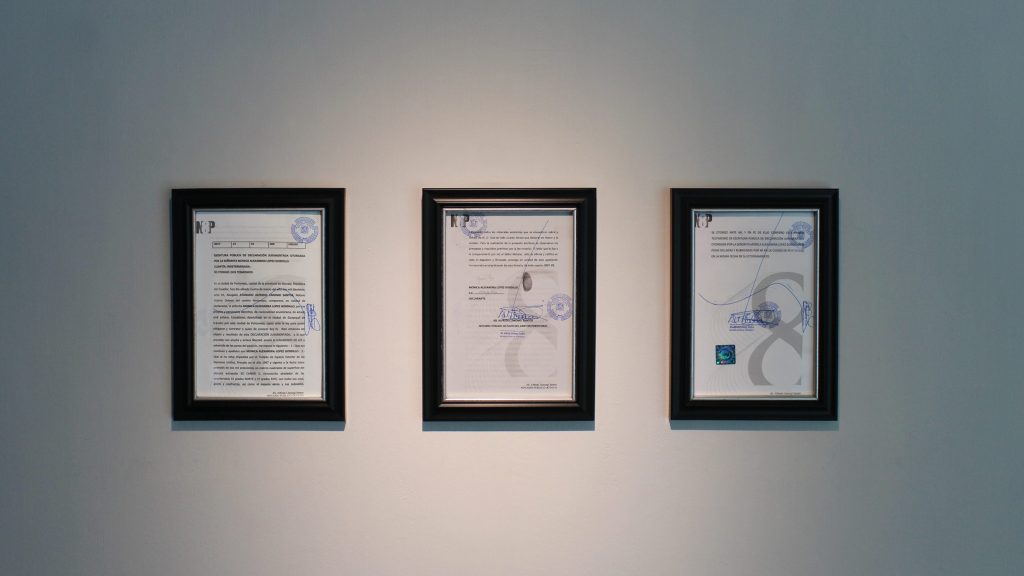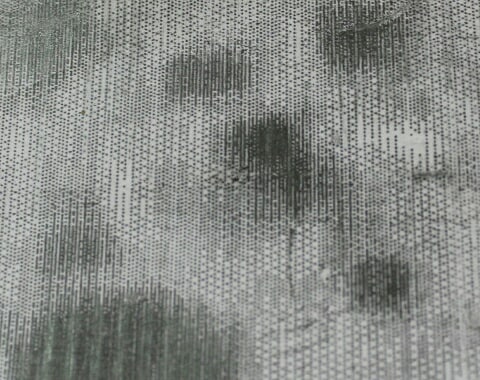The world of global information capitalism daily confronts us with extraordinary events, whose evidences vertiginously move across electronic superhighways. Myriads of images extracted from diverse sources, with heterogeneous qualities and varied formats, invade our space, inevitably set with screens and immersed in its luminous surfaces. We are already with them, and our ways of seeing the world, our affections and representations inhabit their languages. …
Lupe Álvarez



The starry heavens and the moral law
Declaration of intent. Notarized document.
The Outer Space Treaty of the United Nations created in 1967 has a legal loophole, it forbids nations from appropriating extraterrestrial lands but does not mention corporations or individuals. Using a declaration of intent, a fundamental document in juridical acts, this piece consists in the appropriation of a 2701 m2 and 2km depth piece of land in the planet 55 Cancri e, whose rough diamonds equals the GDP on Earth.





The kaleidoscope of Zacharias Janssen
Sources: Cambridge university, Top history, Science@nasa, Exploring nature, Exoplanetas noticias, Architectureexposed, National geographic, Nasa jet propulsion laboratory, The universe unfold, SETI Institute, Sci News, The infographics show, Debeers Space and the universe, Victoria’s secret, Nasa explanet archive
As if it were a metapicture, this video installation is an image that reflects on images, words, and their modes of circulation. I am interested in generating, within the installation, the coexistence of different visual textures. As the planet is beyond the limits of the observer’s perceptual environment, the corporeal visual experience is replaced by its relationship with technical devices. It is impossible to see the planet in its entirety; all that can be seen are fragments. The videos, blending science, fiction, and popular culture, will display different visualities that are part of the repertoires proposing the idea of space. They visually support the construction of the value of the planet and the diamond.



The twilight of the dean
Video lecture performance. 24 min
Sources: National geographic, space.com, nasa.com, research gate, exocast.com, abc.es, nasa.gov, astronoo.com, astronomy.com, forbes.com, scitechdailt, europlanetsociety.org, exoplanet.com, skyondtelescope, universe today, astronomyhudson.org, phys.com, Victoria´s secret, Architectureexposed.com
The twilight of the dean is a simulated conference revolving around a major discovery, navigating the boundaries between science as rigor and science as fiction. The script is composed of fragments of texts extracted from scientific journals and websites containing information about the diamond planet 55 Cancri e. The narration connects disparate images as the performer presents a series of scientific, historical, and economic facts, while also raising philosophical questions rooted in existentialist and linguistic traditions.






Crown of suns
Graphite on paper
The Crown of suns series of drawings take its reference images from coronagraph record files, a device that, when adapted to a telescope, is capable of blocking the light of a star, used to study the solar corona and to search for exoplanets. These technical visualization methods paradoxically show a less objective image endowed with imprecise meanings. In its manufacture, the drawing becomes an exercise in the emulation of artificiality.


Breath
Object capable of transforming a diamond into carbon dioxide
The disappearance of one of the most coveted objects on the market that symbolizes infinity is the opposite aim expected in processes of matter transformation for industrial manufacturing. The material changes to become imperceptible; it is free of its economic value emphasizing its symbolic condition. This piece triggers reflections on the appreciation we hold on materials. From a molecular point of view, the air is considered nothing, but CO2 is a vital noble gas.





Field diary
The field diary is an instrument used to record those facts that can be susceptible to be interpreted, it is a tool to think about the possibilities that such an expedition could allow and require. The notes on planning of a journey to a remote and dangerous place include gathered information, such as the location of the planet, project designs, formulas, drawings, and research annotations that evidence the processes that have led the ideas of the 55 Cancri e project.